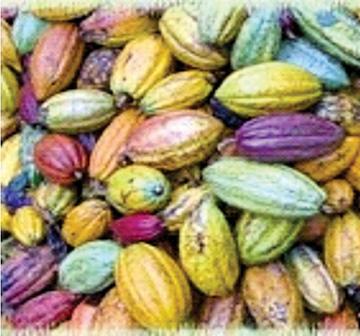
Cocoa pods (Theobroma cacao)
Common names: Cocoa, Cacao, Chocolate
Local names: Tamil: Kakkavo, Malayalam: Kokkoo
It is a tropical rain forest crop cultivated for its beans, which are contained in large red or yellow pods. The plant is “cauliflorous” with flowers (and later fruits) protruding directly from the woody branches and trunk. The fruit, or “pod”, reaches to one foot long and 2-4 inches in diameter. The beans are embedded in white mucilage (together about one third the total weight of the pod). Approximately 0.030 million tone of the material is annually available in the country. It contains 63.5% TDN and 6.3% DCP. The pods are rich in potassium.
Deleterious factor
Cocoa beans contain theobromine, an alkaloid poisonous to animals, which limits their use for feeding. The level of theobromine is very low in the pods.
Inclusion
Fresh pods are sometimes consumed by livestock, but to ensure that the animals consume sufficient quantities, the pods must be sun dried (to 60% moisture content) and then chopped, ground and pelletized. Pod meal has been fed without toxic effects to cattle in quantities of up to 7 kg per day (FAO, AFRIS). For dairy cows, pod meal seems to be comparable in value to corn-on-cob meal.
